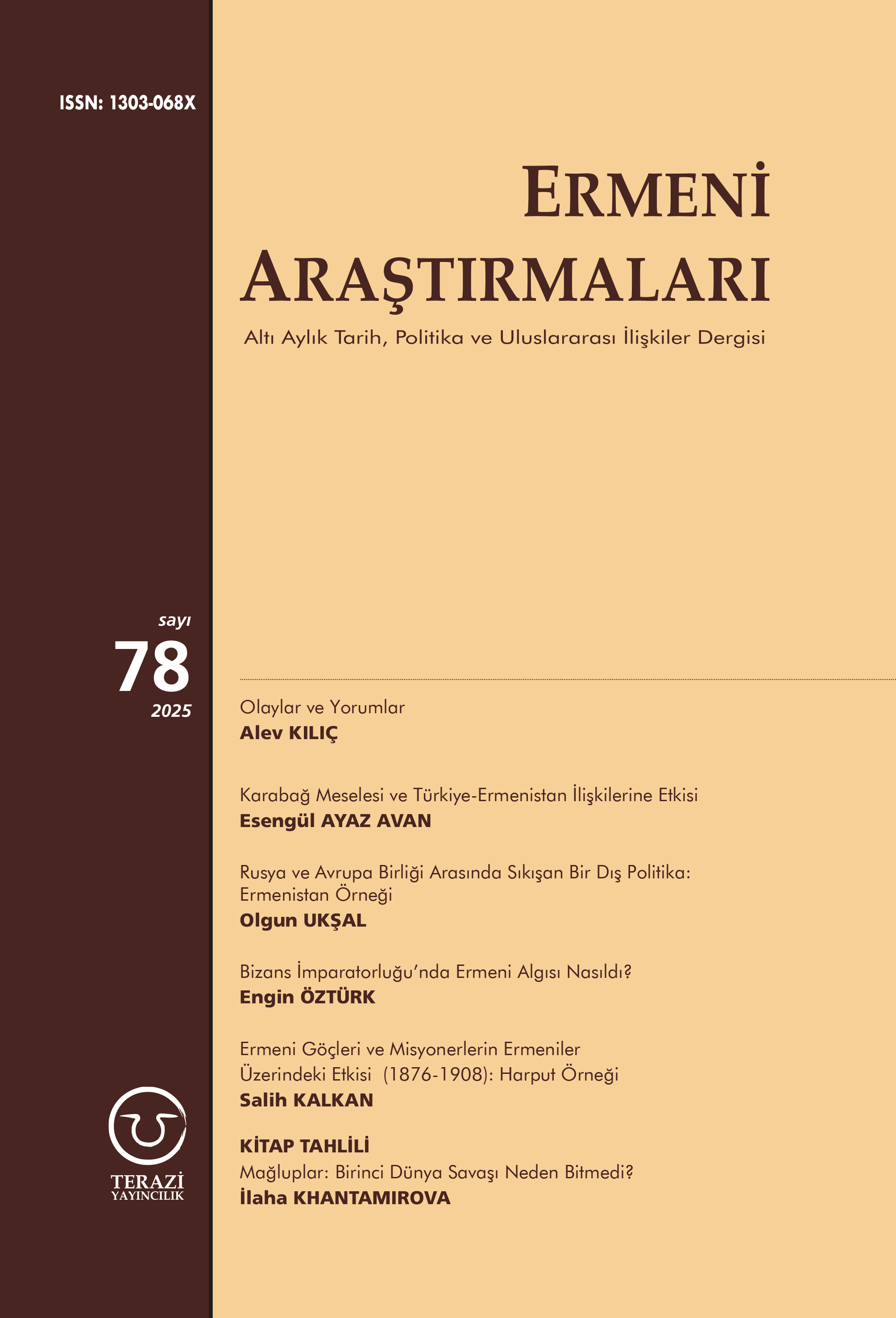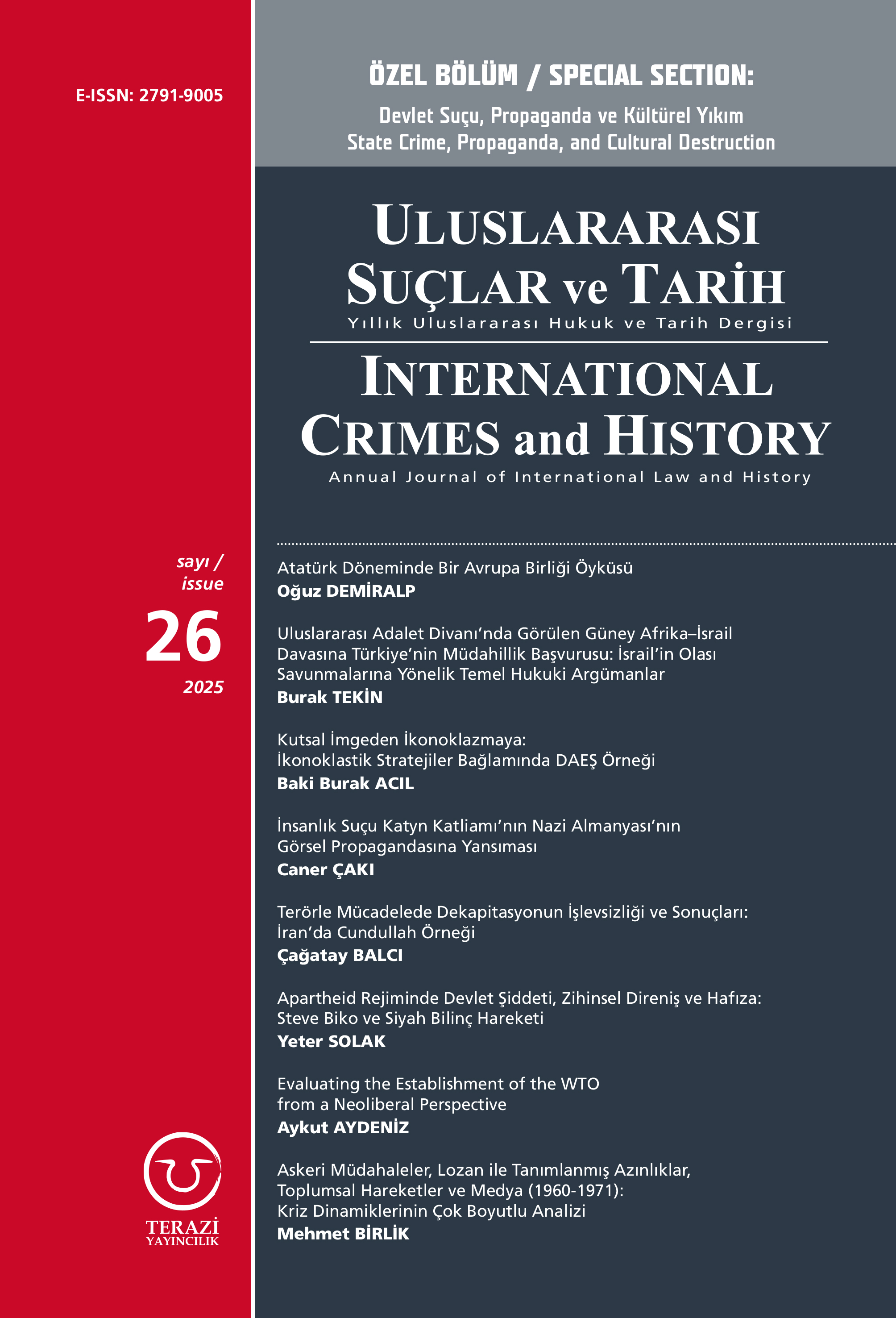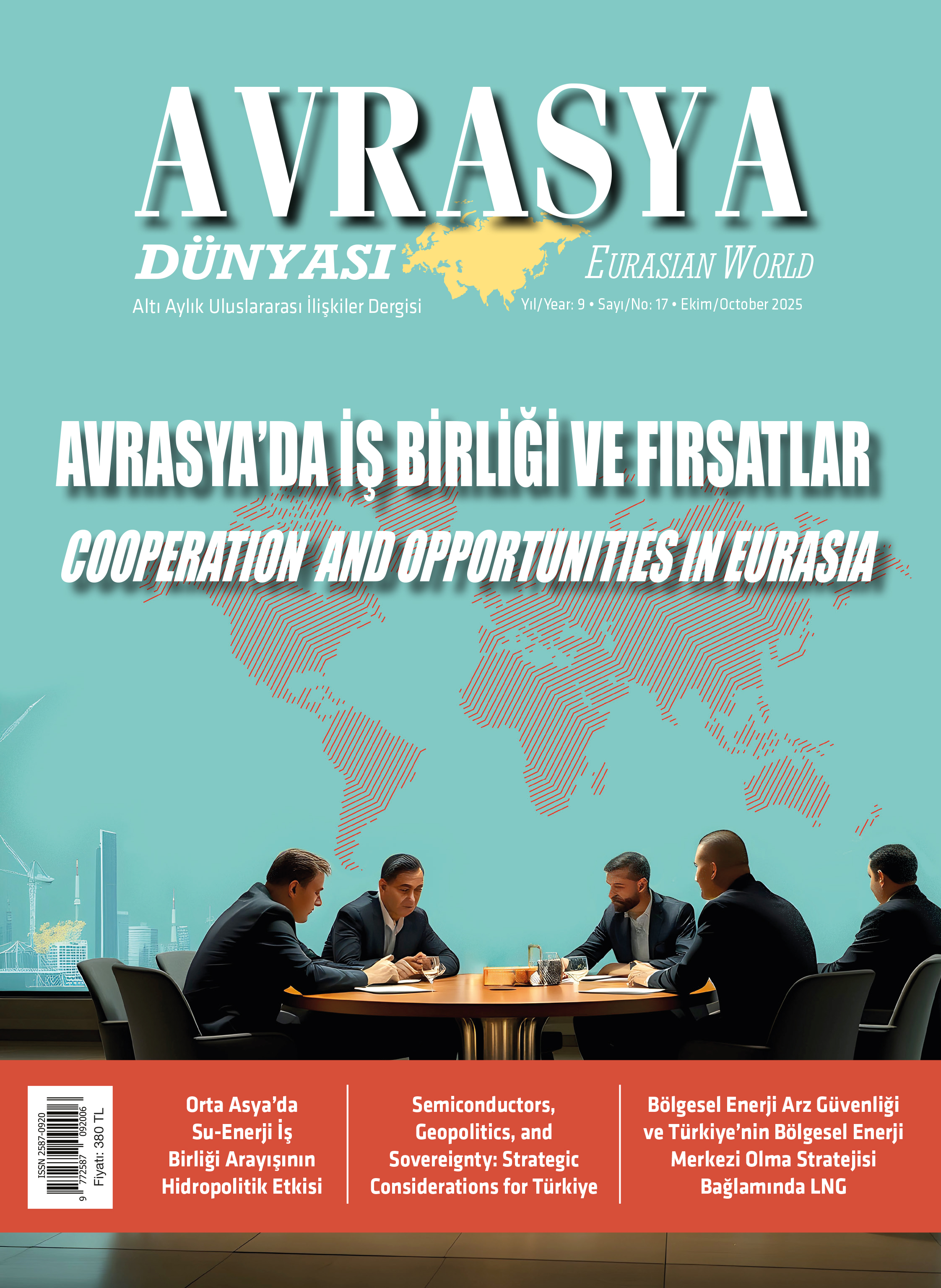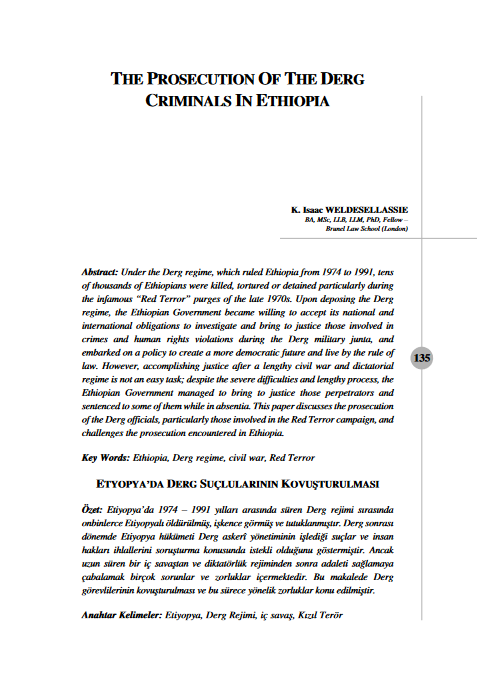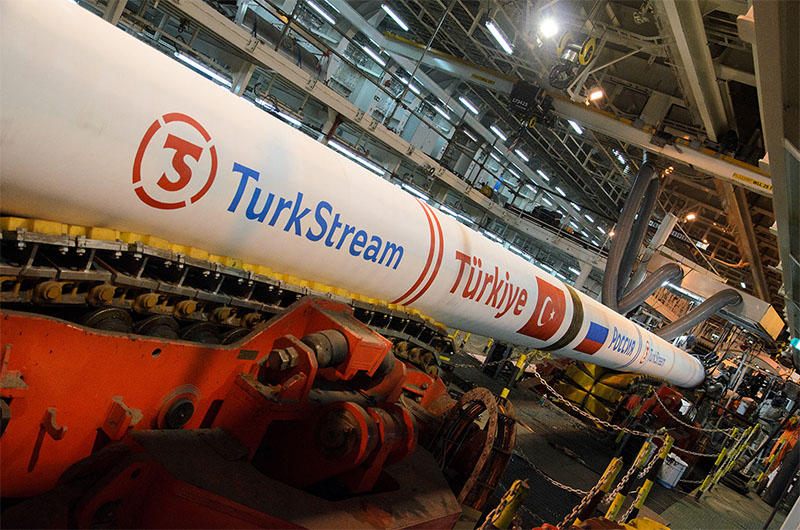
After the agreement that had been signed in 2019 between Russia and Ukraine expired as of 2025, Gazprom announced that the flow of Russian gas to Europe via Ukraine was halted on New Year's morning as a result of Kiev's refusal to renew the agreement. Thus, the energy route, dating back to the Soviet Union era and having been in operation ever since (even during the Russian-Ukrainian War that started in 2022), has come to an end. The cessation of this shipment, which earned Ukraine up to 1 billion dollars a year in transit fees, was described as “one of Moscow's biggest defeats” by the Ukrainian president Zelensky and as a “new victory” for Europe by the Polish foreign minister, while Slovakian prime minister Fico pointed out that this development will have drastic consequences for the EU rather than the Russian Federation.[1] Russian Foreign Ministry Spokesperson Zaharova also stated that the losses in Russian natural gas are economically damaging to Europe and that the United States is benefitting from this situation.
This development is closely linked to the European states' aim to reduce their dependence on Russia for energy in line with their goal to establish energy security, which has increased especially after the Russian-Ukrainian War. The share of Russian gas in the European market has decreased from approximately %35 to %8 since February 2022. Although Slovakia, Hungary, and Austria remained dependent on Russian gas during this period, they prepared for the disruption by securing alternative sources. Slovakia and Austria have made alternative procurement agreements, while Hungary will continue to receive Russian gas via the TurkStream pipeline through the Black Sea. However, the first and critical impact of this step was seen in the Transnistria[2] region in the form of hot water and heating outages and the cessation of industrial activities.[3]
During the negotiations to extend the agreement last year, the option of Russia and Azerbaijan selling gas to each other and labelling the transit gas as Azerbaijani gas was also proposed, but this option was also rejected by the Ukrainian government. Had this option been accepted, Azerbaijan would have continued to buy gas from Russia, while Russia would have continued to supply gas labelled as Azerbaijani to Ukraine. In short, there would have been no change in the gas flow.[4] On the other hand, the EU is leaning towards the LNG import option.
Has the Period of Russian Gas to Europe Come to an End?
Although Kiev's move could be interpreted as the end of Moscow's decades-long dominance in European energy markets, it is too early to make such a comment. A spokesperson for the European (Union) Commission stated that the European gas infrastructure is flexible enough for non-Russian procurement and that the EU is preparing for disruption by increasing its LNG (liquefied natural gas) import capacities since 2022. Since the beginning of the war, the EU has reduced its energy dependence on Russia by increasing its imports from Norway via pipeline and from Qatar and the US via LNG transport.[5] In this respect, it can be said that the main reason for Europe's LNG demand is the issue of energy security.
European states have historically procured their natural gas mainly through pipelines, with Russian gas constituting approximately one third of such imports. This ratio, which varies by country, such as %65 for Germany and as high as 100% for Bulgaria. Geographical proximity and the relatively low price of pipeline imports from Russia had previously made LNG imports not an ideal choice for Europe, but the Russia-Ukraine War led to a significant shift in Europe's energy policies. In this direction, European states essentially follow three strategies: 1) Turning to other alternatives, especially LNG, 2) Increasing Europe's domestic energy production, 3) Reducing demand and increasing energy efficiency. LNG has come to the agenda due to the limited imports from Norway and other regions through pipelines.[6] Even though LNG imports may provide a short-term solution in terms of Europe's energy supply security, its sustainability needs to be studied in depth for the medium and long term, taking into account Europe's climate targets.
Natural gas is a vital energy source for many countries around the world. According to the International Energy Agency, global natural gas consumption has increased steadily over the last decade and demand is expected to continue to increase in the coming years. In terms of supply, the US is currently the largest producer of natural gas, followed by Russia and Iran. In terms of supply share by country, Russia is currently the largest exporter of natural gas, followed by Qatar and Norway. The US has become a major exporter in recent years due to its shale gas supply. In terms of importers, Japan is currently the largest importer of liquefied natural gas, followed by China and South Korea. Rapid growth of gas demand in developing countries such as China and India (as these countries increase their use of natural gas, competition for limited LNG supply intensifies, leading to potential price volatility and supply chain disruptions) poses a challenge for the stability of gas supply in Europe.[7]
US Gas as an Alternative to Russian Gas
When CEDIGAZ and GIIGNL data are analyzed, it is seen that the share of the US in Europe's (EU-27 and the United Kingdom) LNG imports has increased over the years (especially in 2022 and after) and has become Europe’s largest supplier, currently accounting for about half of imports. The US is followed by Qatar in the data.[8]
The European Commission refers to LNG as an insurance policy against threats to the security of energy supply on the one hand, while adopting the view that it can contribute to the fight against climate change on the other. There is potential for LNG trade between the EU and the US to increase further in the coming years and it is envisaged that with competitive pricing, LNG can play an important role in EU gas supply and increase supply diversity and energy security.[9] In 2024, the US share in Europe's LNG imports increased to %55. For 2025, US export growth is estimated to increase, considering that imports from Russia will be cut to a large extent.[10]
The Only Route to Europe: TurkStream
TurkStream became the only European route for Russian gas after the “Nord Stream” gas pipeline from the Baltic Sea to Germany was blown up in 2022, the Yamal-Europe pipeline through Belarus was closed, and Ukraine stopped gas transit.
The TurkStream pipeline, which became operational in January 2020, has become an even more important outlet for Russian gas imports with the end of transit routes after Ukraine's decision. Türkiye is located close to many energy source countries and serves as a hub for regional gas trade.[11] TurkStream's total capacity is 31.5 billion cubic meters per year[12] and has delivered more Russian gas to the EU and Moldova than Ukraine, with 16.7 cubic meters delivered in 2024. Before the war, Russian gas was shipped to Europe through four routes, but now TurkStream has become the only remaining route. However, TurkStream does not have the capacity to compensate for the lost flows from Ukraine on its own.[13] The suspension of transit through Ukraine may result in Europe increasing its LNG imports on the one hand, while on the other hand, it may require an increase in pipeline shipment through Türkiye. The potential expansion of TurkStream could thus compensate for Europe's loss. In addition, a possible Qatar-Türkiye gas pipeline project could also increase Europe's diversity of sources and routes, thereby increasing Europe's supply security.[14] For EU countries, LNG imports seem appealing both as a policy instrument to improve relations with the US and as an alternative to Russian gas, but it remains unclear whether it is a sustainable and long-term solution. Taking all this into account, under the current circumstances, Türkiye has long-term opportunities as a regional energy hub and has the potential to expand its role and thus its regional influence by adding new pipeline projects to its existing pipeline routes, especially TurkStream.
*Photo: BOTAŞ
[1] Shaun Walker, “Russian gas flows to Europe via Ukraine cease as transit agreement expires,” The Guardian, 1 January 2025, https://www.theguardian.com/world/2025/jan/01/breakaway-moldovan-region-cuts-heating-and-hot-water-as-russia-stops-gas-flow.
[2] Transnistria is a de facto republic, de jure recognised by the UN as part of Moldova, but which has unilaterally declared its independence from Moldova.
[3] “Russian gas shutdown forces closure of almost all industry in Transnistria,” The Guardian, 2 January 2025, https://www.theguardian.com/world/2025/jan/02/moldovan-region-transnistria-shuts-down-its-industries-after-loss-of-russian-gas.
[4] Ugnė Keliauskaitė and Georg Zachmann, “The end of Russian gas transit via Ukraine and options for the EU,” Bruegel, 17 October 2024, https://www.bruegel.org/analysis/end-russian-gas-transit-ukraine-and-options-eu.
[5] Vladimir Soldatkin and Dan Peleschuk, “Russian gas era in Europe ends as Ukraine stops transit,” Reuters, 1 January 2025, https://www.reuters.com/business/energy/russia-halts-gas-exports-europe-via-ukraine-2025-01-01/.
[6] Zwickl-Bernhard, Sebastian, and Anne Neumann. “Modeling Europe’s Role in the Global LNG Market 2040: Balancing Decarbonization Goals, Energy Security, and Geopolitical Tensions.” Energy 301 (August 15, 2024): N.PAG. doi:10.1016/j.energy.2024.131612.
[7] Botão, Rodrigo Pereira, Hirdan Katarina de Medeiros Costa, and Edmilson Moutinho dos Santos. “Global Gas and LNG Markets: Demand, Supply Dynamics, and Implications for the Future.” Energies (19961073) 16, no. 13 (July 1, 2023): 5223. doi:10.3390/en16135223.
[8] Victoria Zaretskaya, “The United States remained the largest liquefied natural gas supplier to Europe in 2023,” U.S. Energy Information Administration, 29 February 2024, https://www.eia.gov/todayinenergy/detail.php?id=61483.
[9] “EU-US LNG TRADE: US liquefied natural gas (LNG) has the potential to help match EU gas needs,” European Comission, https://energy.ec.europa.eu/system/files/2022-02/EU-US_LNG_2022_2.pdf.
[10] “US LNG exports soar, Europe remaining the main destination,” Euractiv, 3 January 2025, https://www.euractiv.com/section/eet/news/us-lng-exports-soar-europe-remaining-the-main-destination/.
[11] Fuat Kabakcı, “Ukrayna'dan Rus gaz akışının durması Türkiye'yi Avrupa'nın enerji tedarikinde kritik hale getiriyor,” Anadolu Ajansı, 4 January 2025, https://www.aa.com.tr/tr/ekonomi/ukraynadan-rus-gaz-akisinin-durmasi-turkiyeyi-avrupanin-enerji-tedarikinde-kritik-hale-getiriyor/3441565.
[12] “TürkAkım Projesi,” BOTAŞ, https://www.botas.gov.tr/Sayfa/turkakim-projesi/123#:~:text=Toplam%20kapasitesi%2031%2C5%20milyar,Avrupa%20ülkelerine%20doğal%20gaz%20taşıyacaktır
[13] “TurkStream is now the only route for Russian gas to Europe,” bne IntelliNews, 13 January 2025, https://www.intellinews.com/turkstream-is-now-the-only-route-for-russian-gas-to-europe-361174/.
[14] Bekir Caner Şafak, “Revival Of The Qatar-Türkiye Natural Gas Pipeline Project”, Center For Eurasian Studies (AVİM), 16 April 2025, https://avim.org.tr/en/Analiz/REVIVAL-OF-THE-QATAR-TURKIYE-NATURAL-GAS-PIPELINE-PROJECT
© 2009-2025 Center for Eurasian Studies (AVİM) All Rights Reserved
No comments yet.
-
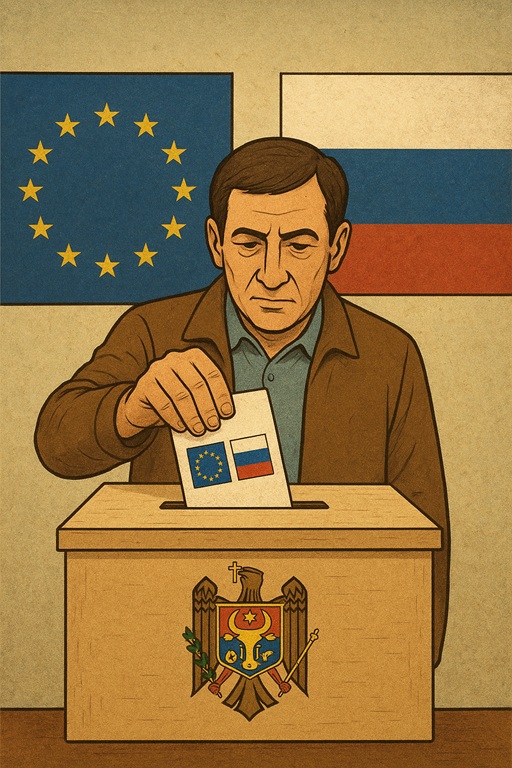 THE MOLDOVA ELECTIONS AND GAGAUZIA AS A POLITICAL REFLECTION OF THE RUSSIA-EU RIVALRY
THE MOLDOVA ELECTIONS AND GAGAUZIA AS A POLITICAL REFLECTION OF THE RUSSIA-EU RIVALRY
Bekir Caner ŞAFAK 26.12.2025 -
 THE INCREASING IMPORTANCE OF TURKSTREAM FOLLOWING KIEV'S SUSPENSION OF RUSSIAN GAS SHIPMENT TO EUROPE
THE INCREASING IMPORTANCE OF TURKSTREAM FOLLOWING KIEV'S SUSPENSION OF RUSSIAN GAS SHIPMENT TO EUROPE
Bekir Caner ŞAFAK 17.01.2025 -
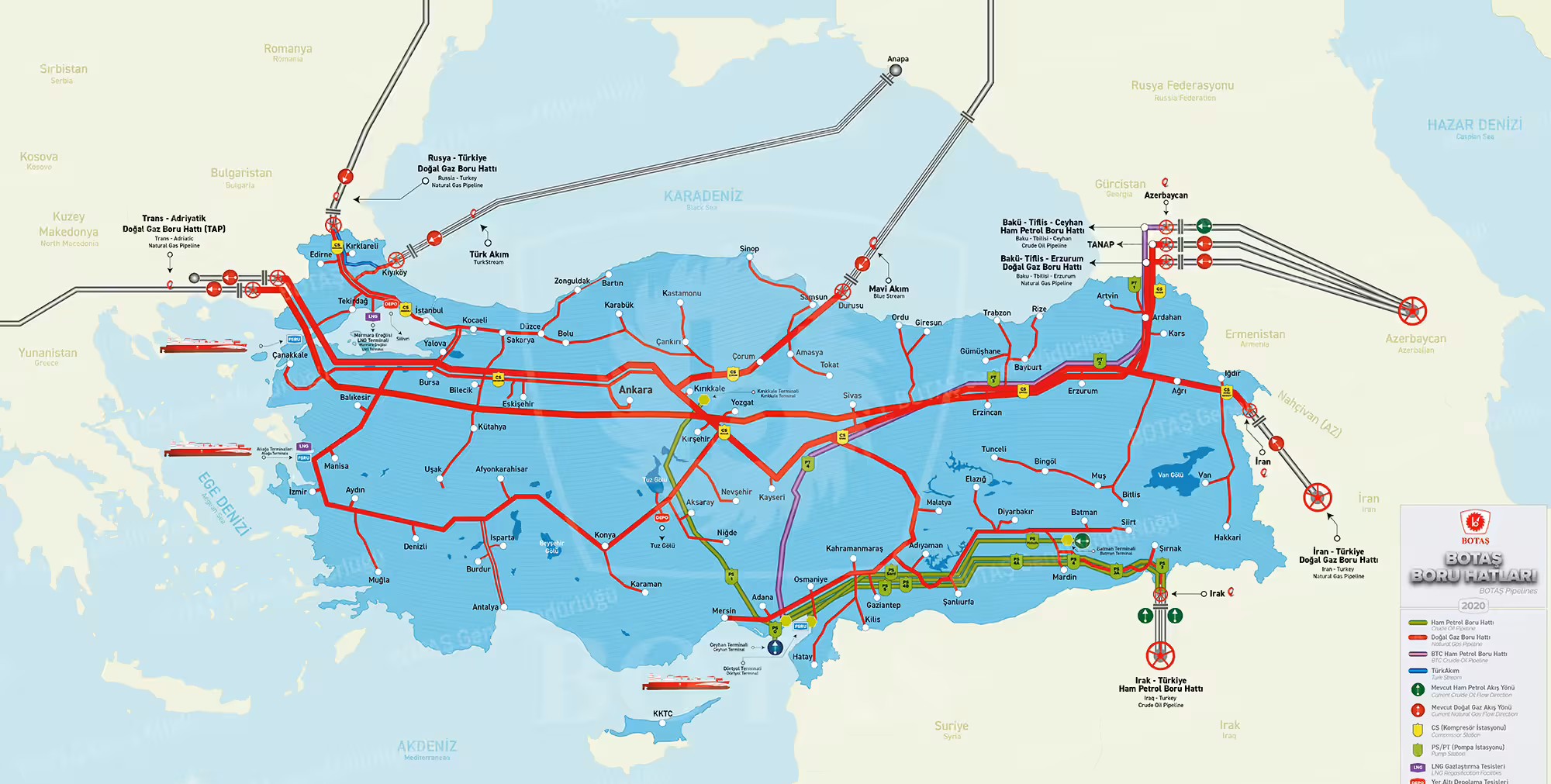 DEVELOPMENTS IN LINE WITH TÜRKİYE’S GOAL OF BECOMING A REGIONAL ENERGY HUB
DEVELOPMENTS IN LINE WITH TÜRKİYE’S GOAL OF BECOMING A REGIONAL ENERGY HUB
Bekir Caner ŞAFAK 24.02.2025 -
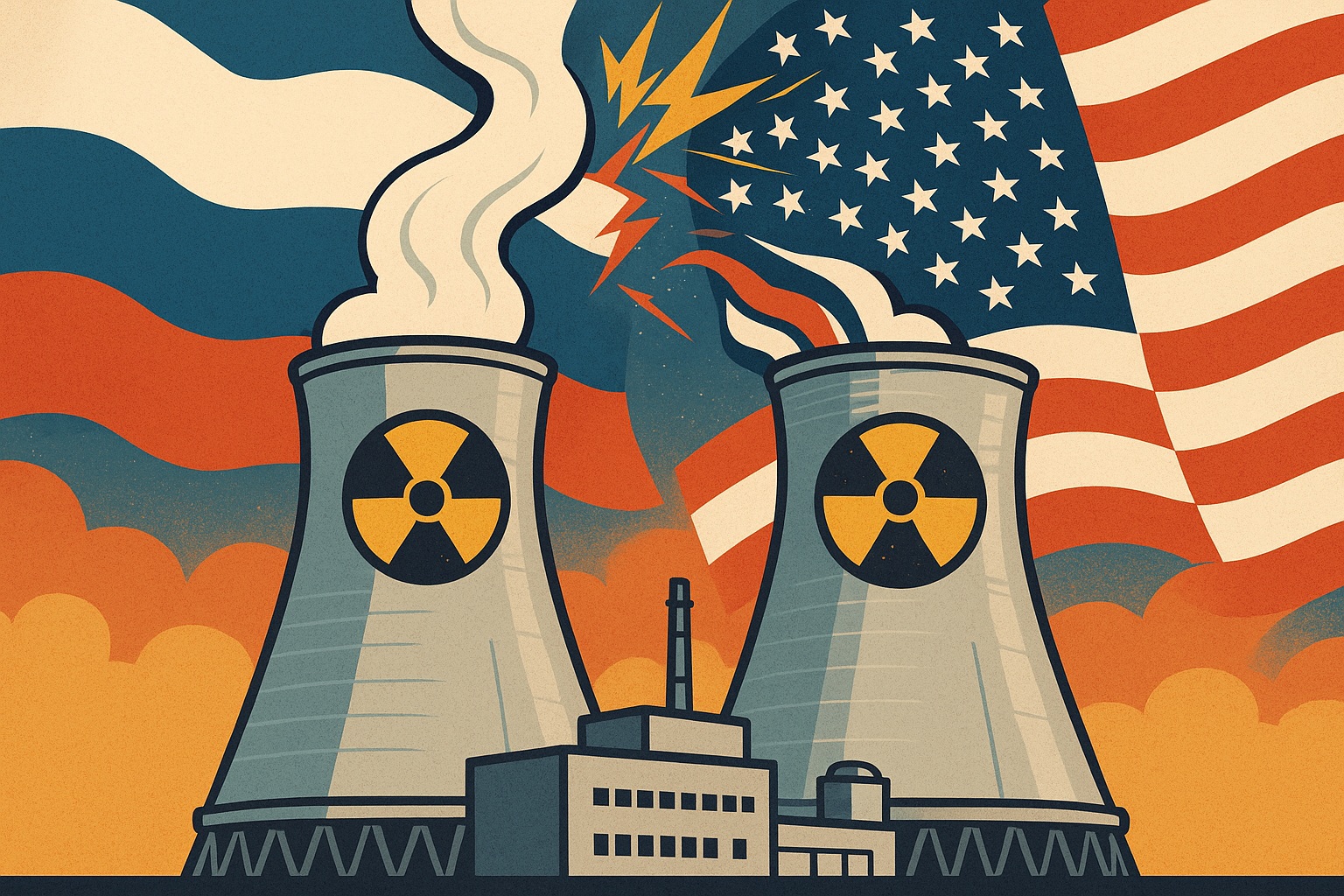 ARMENIA’S NUCLEAR DILEMMA: CAUGHT BETWEEN RUSSIA AND THE WEST
ARMENIA’S NUCLEAR DILEMMA: CAUGHT BETWEEN RUSSIA AND THE WEST
Bekir Caner ŞAFAK 12.11.2025 -
 REVIVAL OF THE QATAR-TÜRKİYE NATURAL GAS PIPELINE PROJECT
REVIVAL OF THE QATAR-TÜRKİYE NATURAL GAS PIPELINE PROJECT
Bekir Caner ŞAFAK 16.04.2025
-
 UZBEKISTAN’S REGIONAL POLICIES UNDER NEW PRESIDENT: A NEW ERA?
UZBEKISTAN’S REGIONAL POLICIES UNDER NEW PRESIDENT: A NEW ERA?
Özge Nur ÖĞÜTCÜ 18.08.2017 -
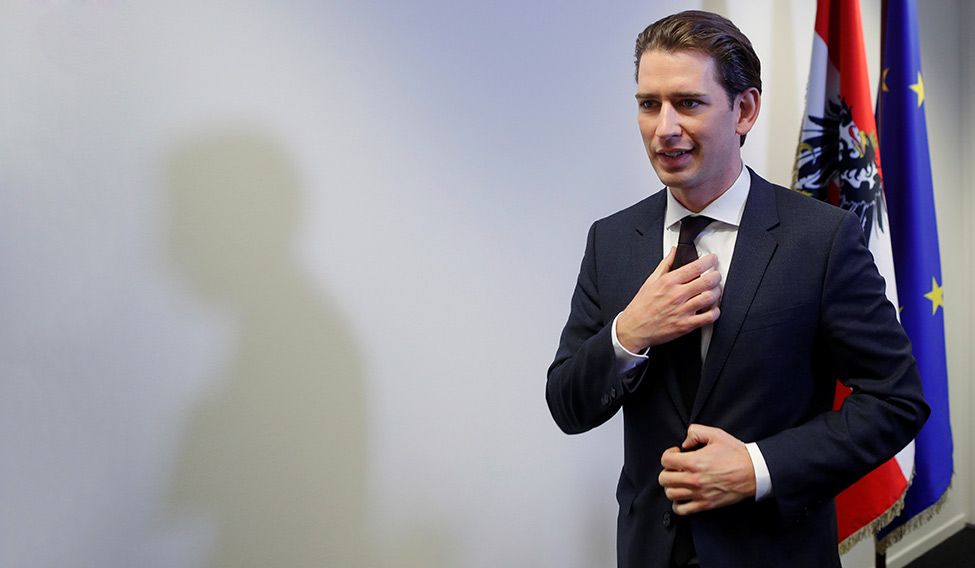 EUROPE’S CHALLENGE WITH THE FAR-RIGHT: AUSTRIA
EUROPE’S CHALLENGE WITH THE FAR-RIGHT: AUSTRIA
Hazel ÇAĞAN ELBİR 25.12.2017 -
 NEW LEADERS FOR THE EUROPEAN UNION HAVE BEEN APPOINTED
NEW LEADERS FOR THE EUROPEAN UNION HAVE BEEN APPOINTED
Hazel ÇAĞAN ELBİR 06.08.2019 -
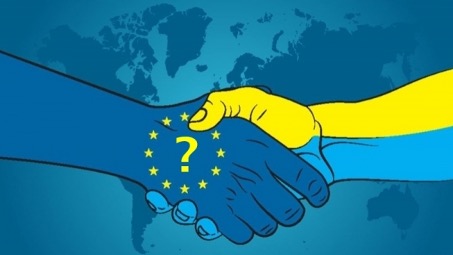 IS THERE DISCRIMINATION BETWEEN REFUGEES IN THE UKRAINE TRAGEDY?
IS THERE DISCRIMINATION BETWEEN REFUGEES IN THE UKRAINE TRAGEDY?
Hazel ÇAĞAN ELBİR 24.03.2022 -
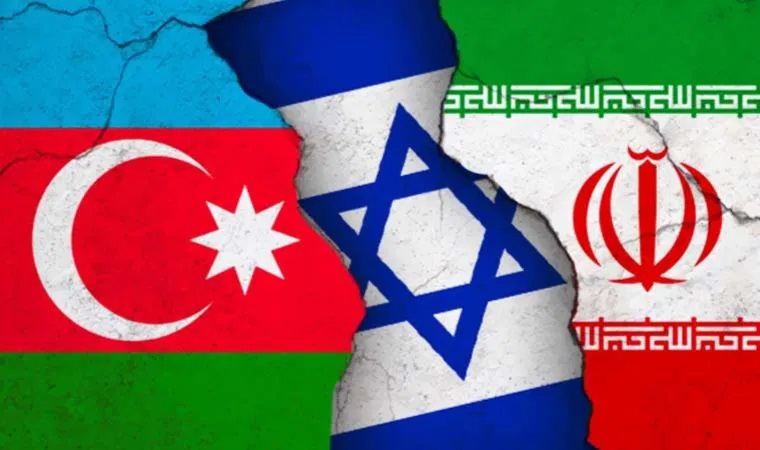 OVERLAPPING INTERESTS IN THE SOUTH CAUCASUS: THE AZERBAIJAN, ISRAEL AND IRAN TRIANGLE
OVERLAPPING INTERESTS IN THE SOUTH CAUCASUS: THE AZERBAIJAN, ISRAEL AND IRAN TRIANGLE
İlaha KHANTAMİROVA 29.05.2025
-
25.01.2016
THE ARMENIAN QUESTION - BASIC KNOWLEDGE AND DOCUMENTATION -
12.06.2024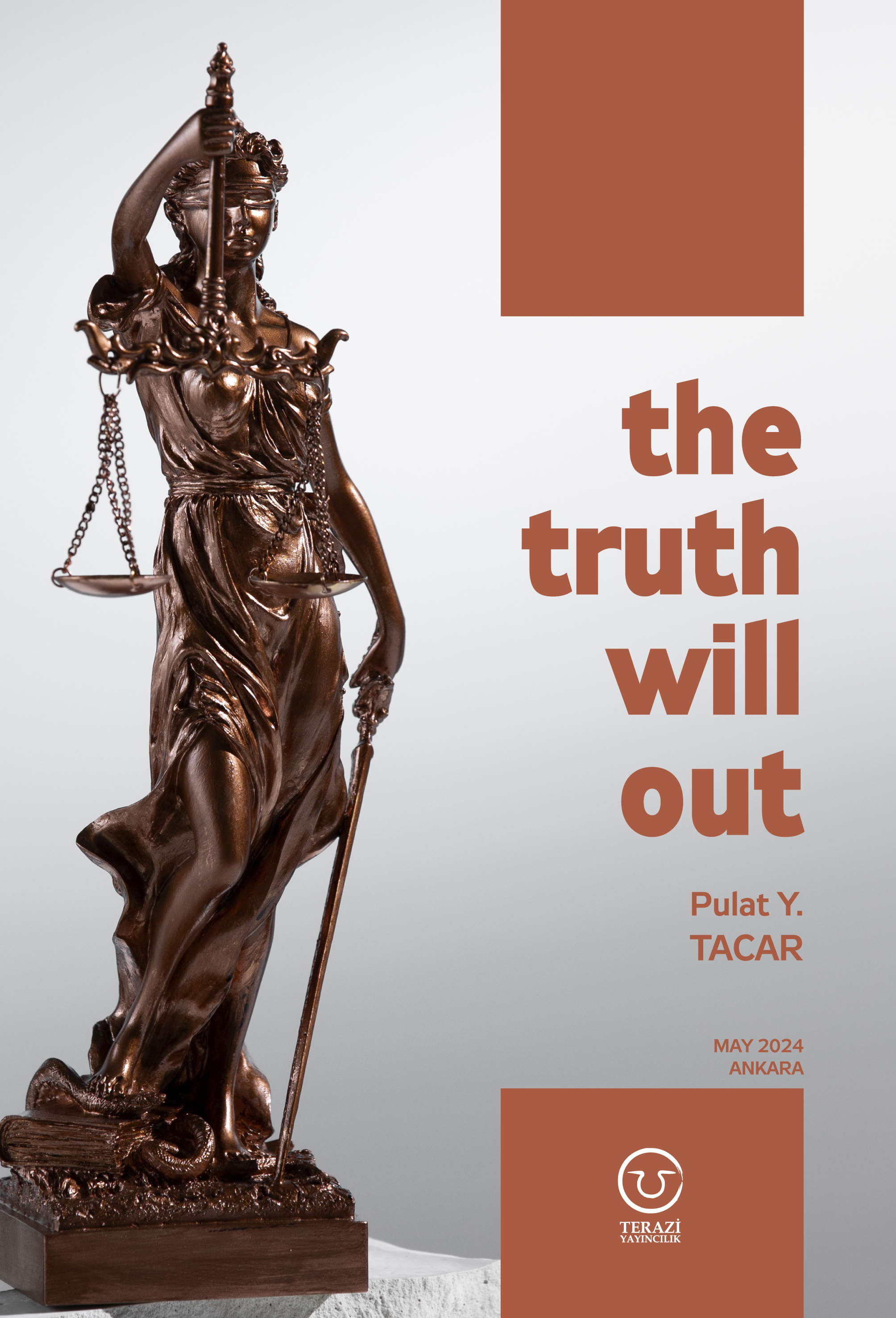
THE TRUTH WILL OUT -
27.03.2023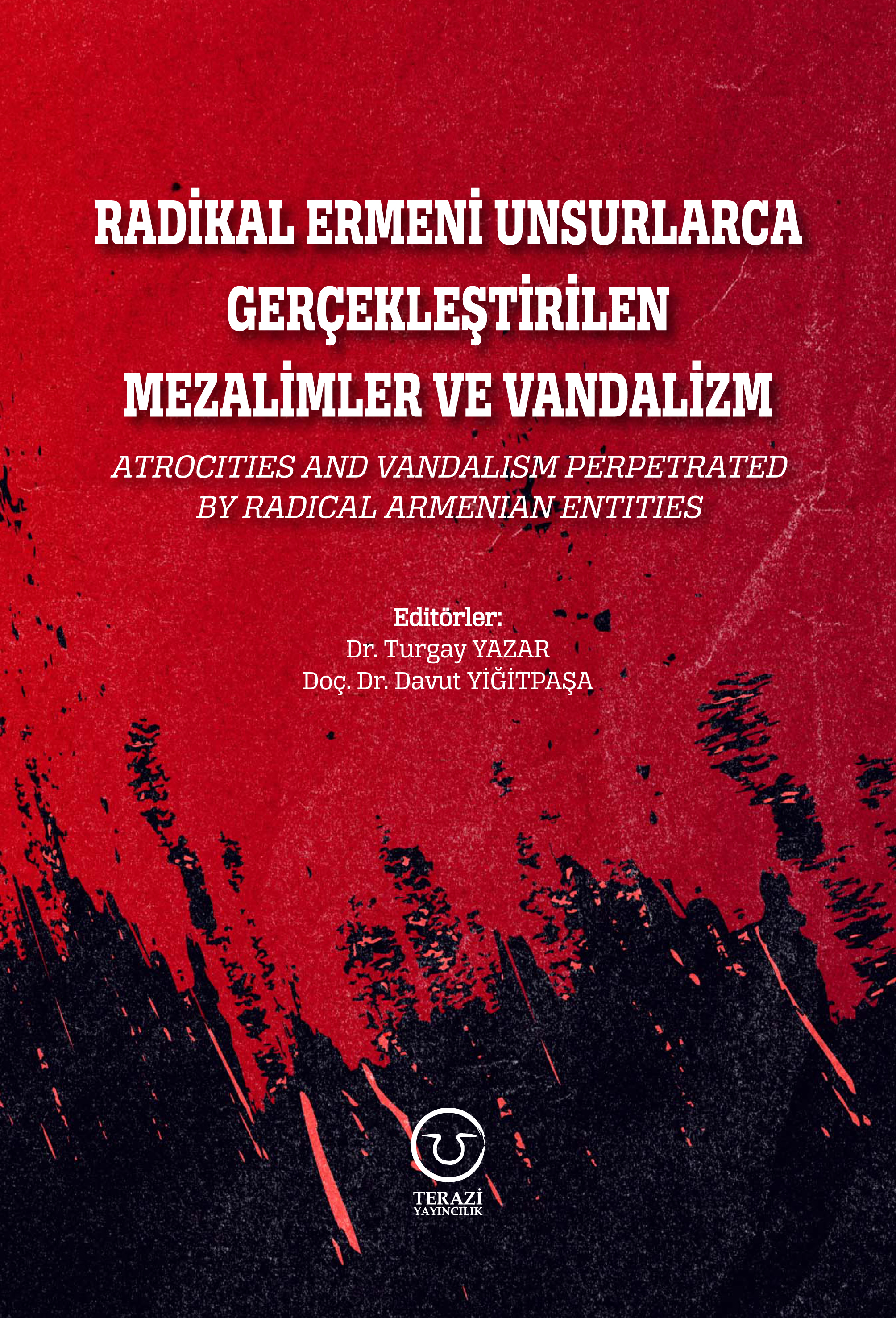
RADİKAL ERMENİ UNSURLARCA GERÇEKLEŞTİRİLEN MEZALİMLER VE VANDALİZM -
17.03.2023
PATRIOTISM PERVERTED -
23.02.2023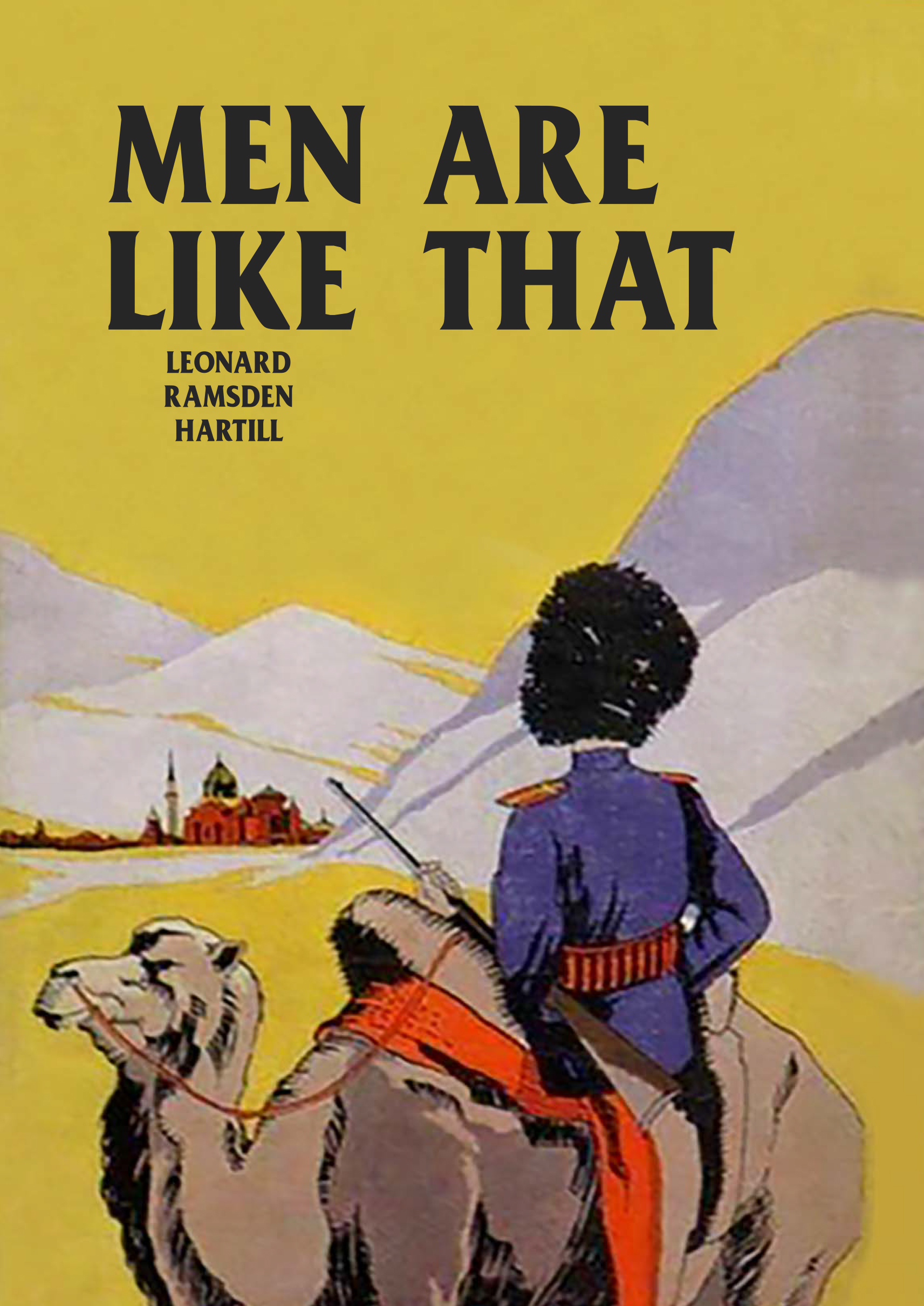
MEN ARE LIKE THAT -
03.02.2023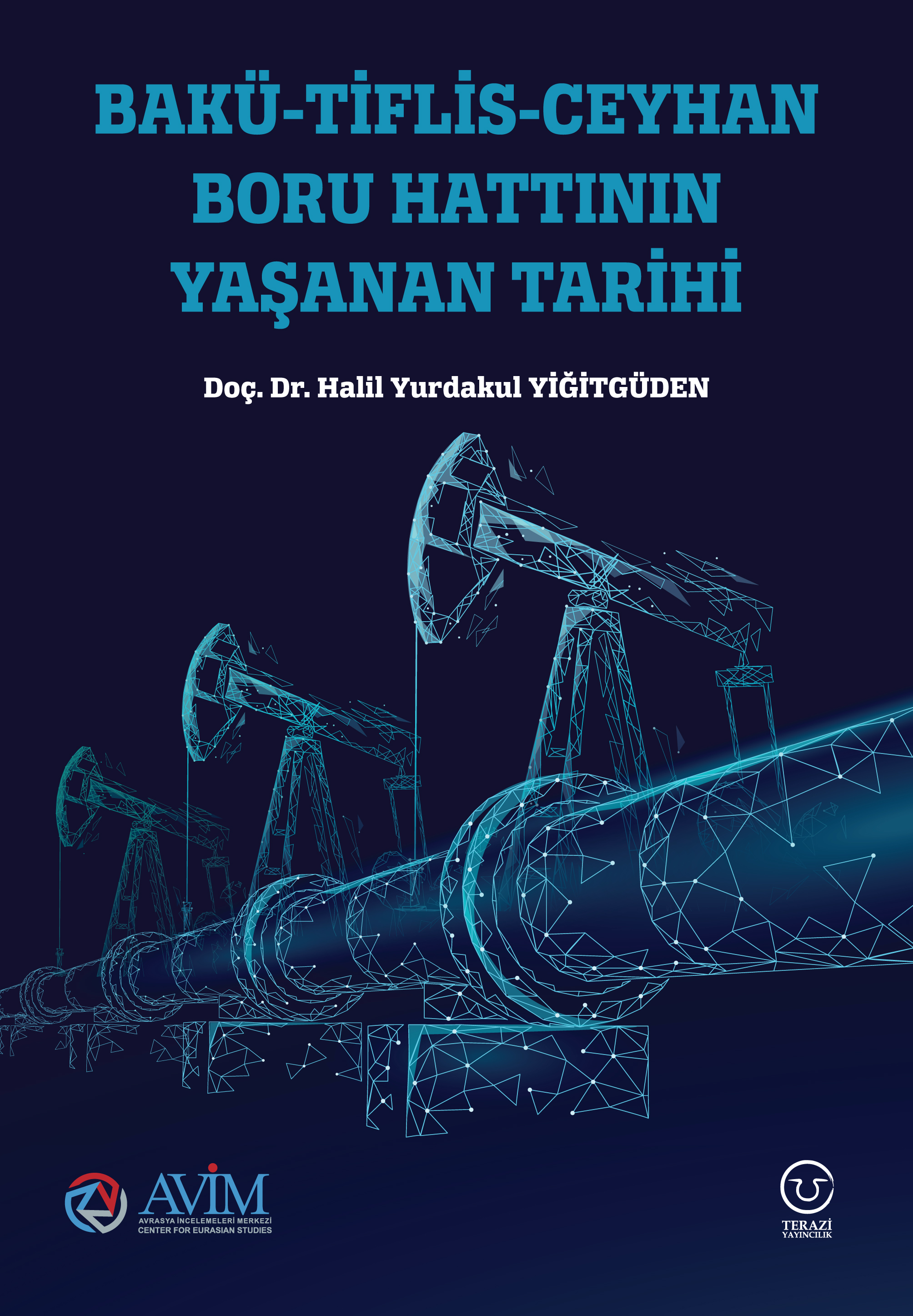
BAKÜ-TİFLİS-CEYHAN BORU HATTININ YAŞANAN TARİHİ -
16.12.2022
INTERNATIONAL SCHOLARS ON THE EVENTS OF 1915 -
07.12.2022
FAKE PHOTOS AND THE ARMENIAN PROPAGANDA -
07.12.2022
ERMENİ PROPAGANDASI VE SAHTE RESİMLER -
01.01.2022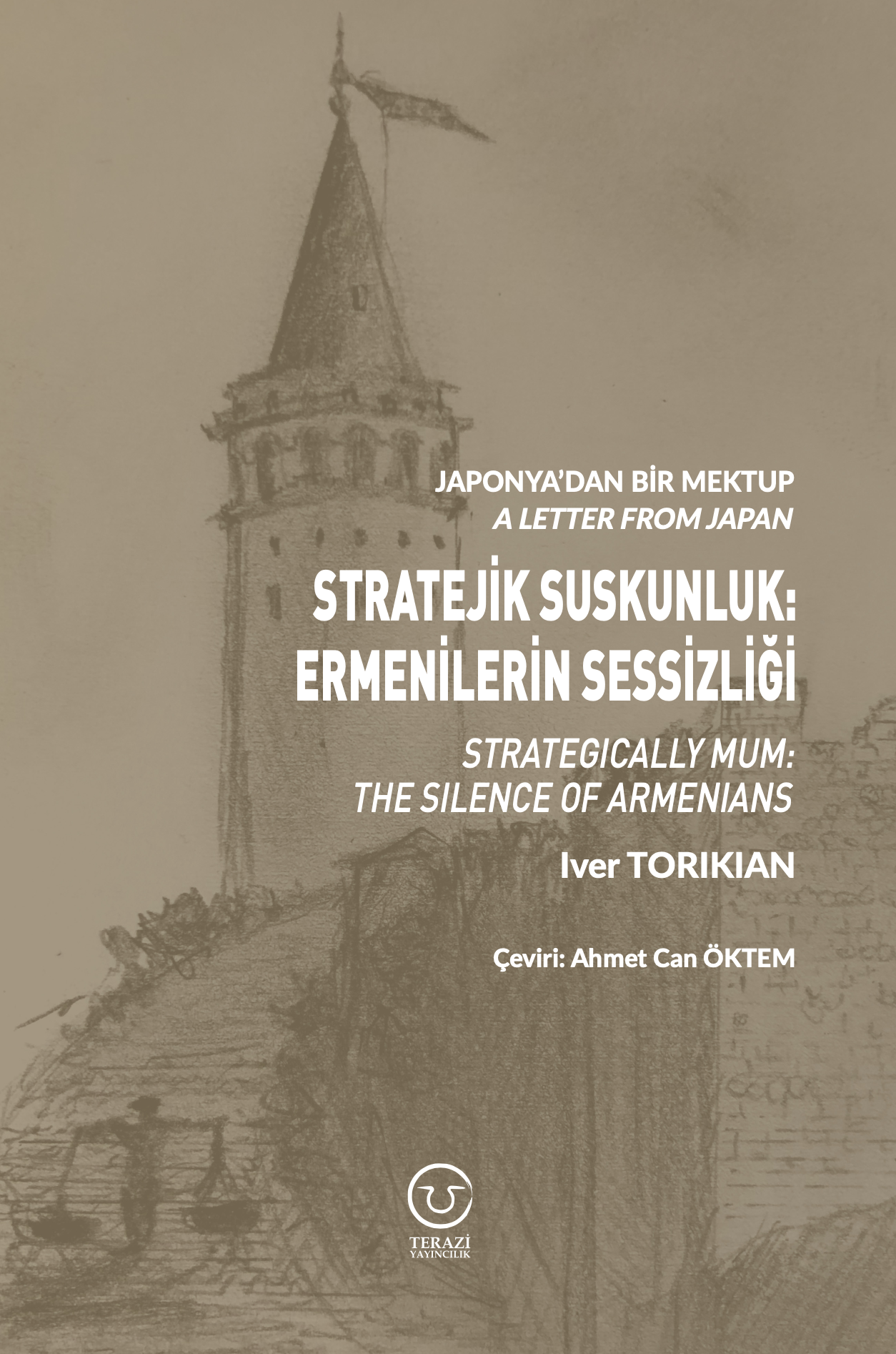
A Letter From Japan - Strategically Mum: The Silence of the Armenians -
01.01.2022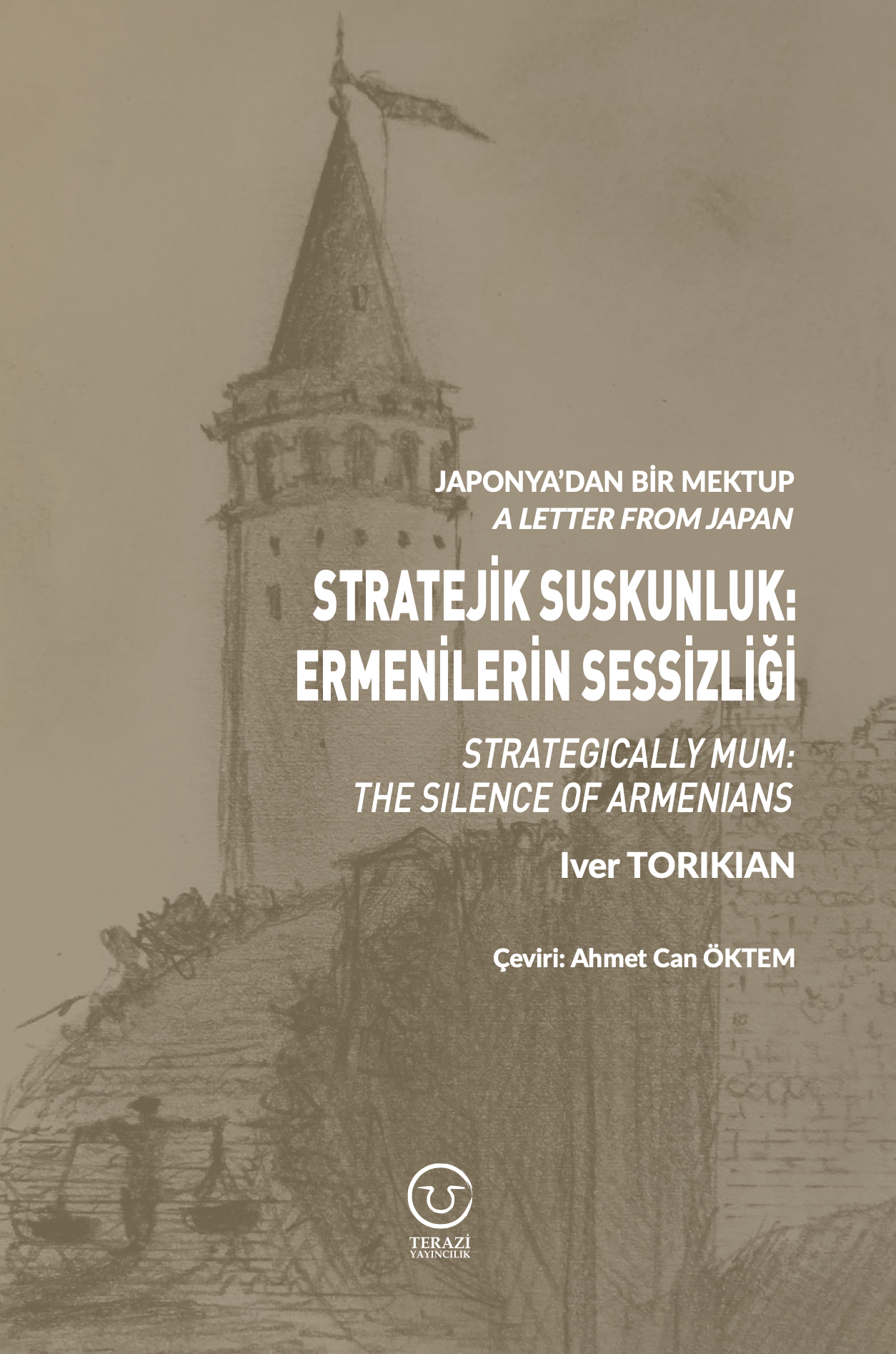
Japonya'dan Bir Mektup - Stratejik Suskunluk: Ermenilerin Sessizliği -
03.06.2020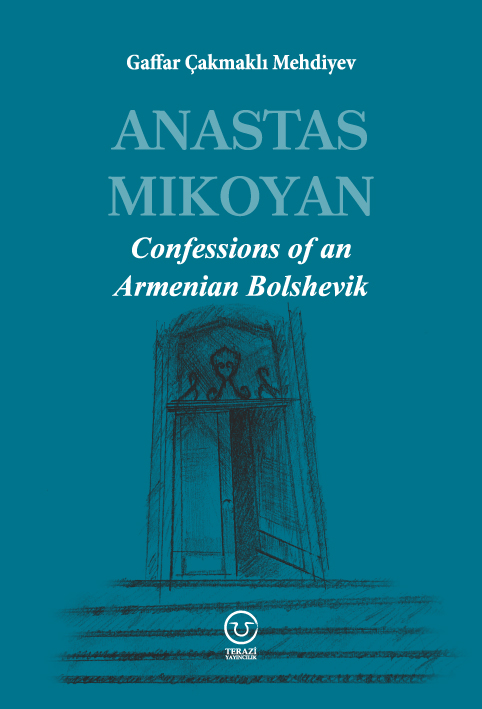
Anastas Mikoyan: Confessions of an Armenian Bolshevik -
08.04.2020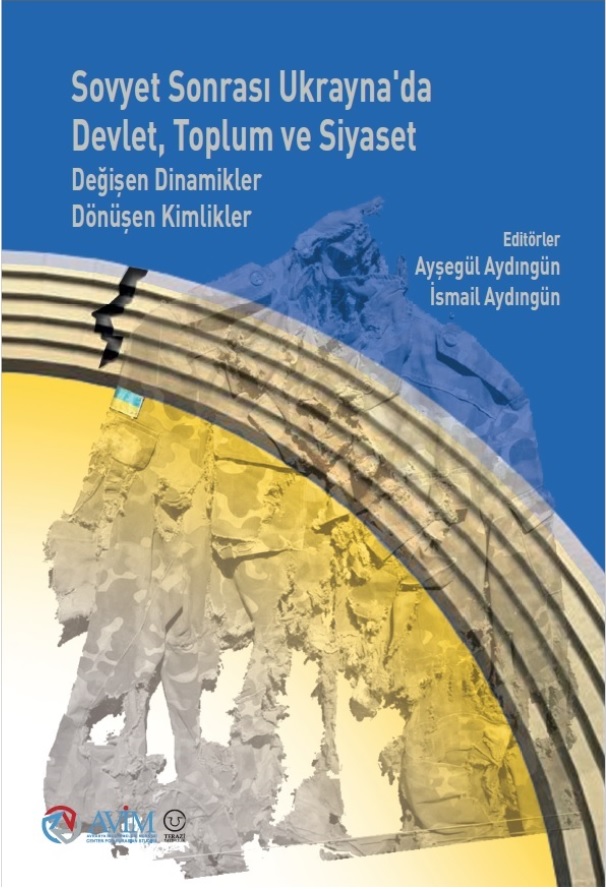
Sovyet Sonrası Ukrayna’da Devlet, Toplum ve Siyaset - Değişen Dinamikler, Dönüşen Kimlikler -
12.06.2018
Ermeni Sorunuyla İlgili İngiliz Belgeleri (1912-1923) - British Documents on Armenian Question (1912-1923) -
02.12.2016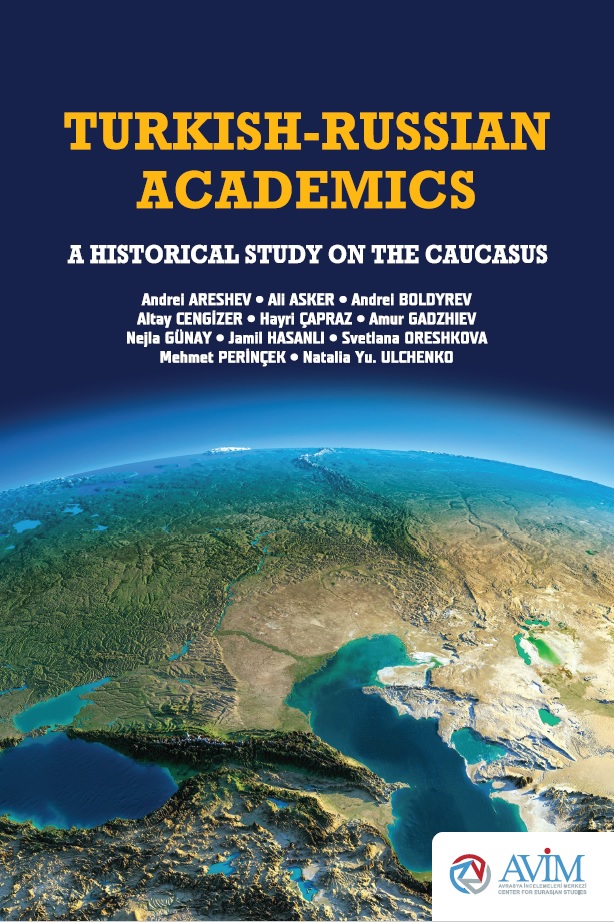
Turkish-Russian Academics: A Historical Study on the Caucasus -
01.07.2016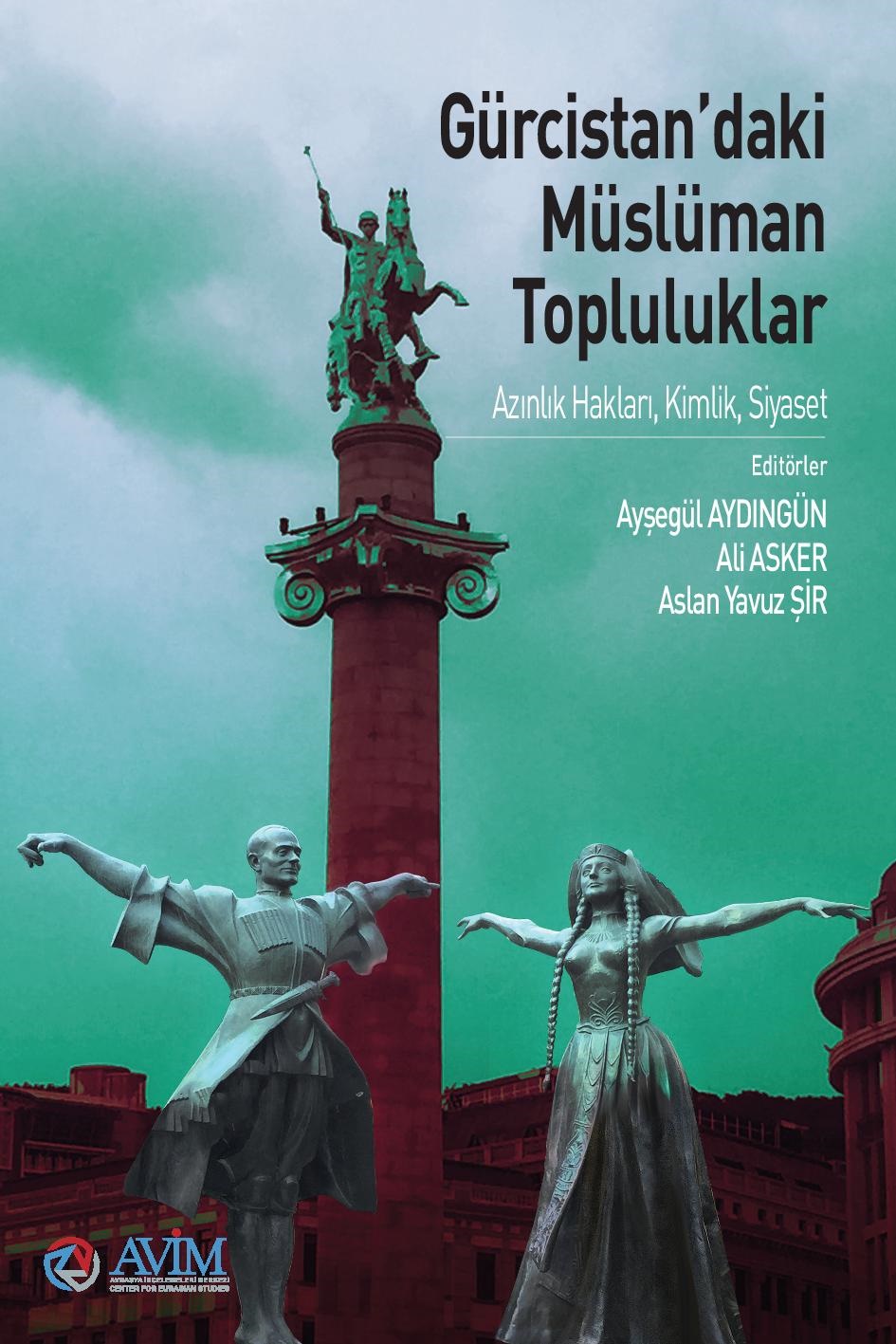
Gürcistan'daki Müslüman Topluluklar: Azınlık Hakları, Kimlik, Siyaset -
10.03.2016
Armenian Diaspora: Diaspora, State and the Imagination of the Republic of Armenia -
24.01.2016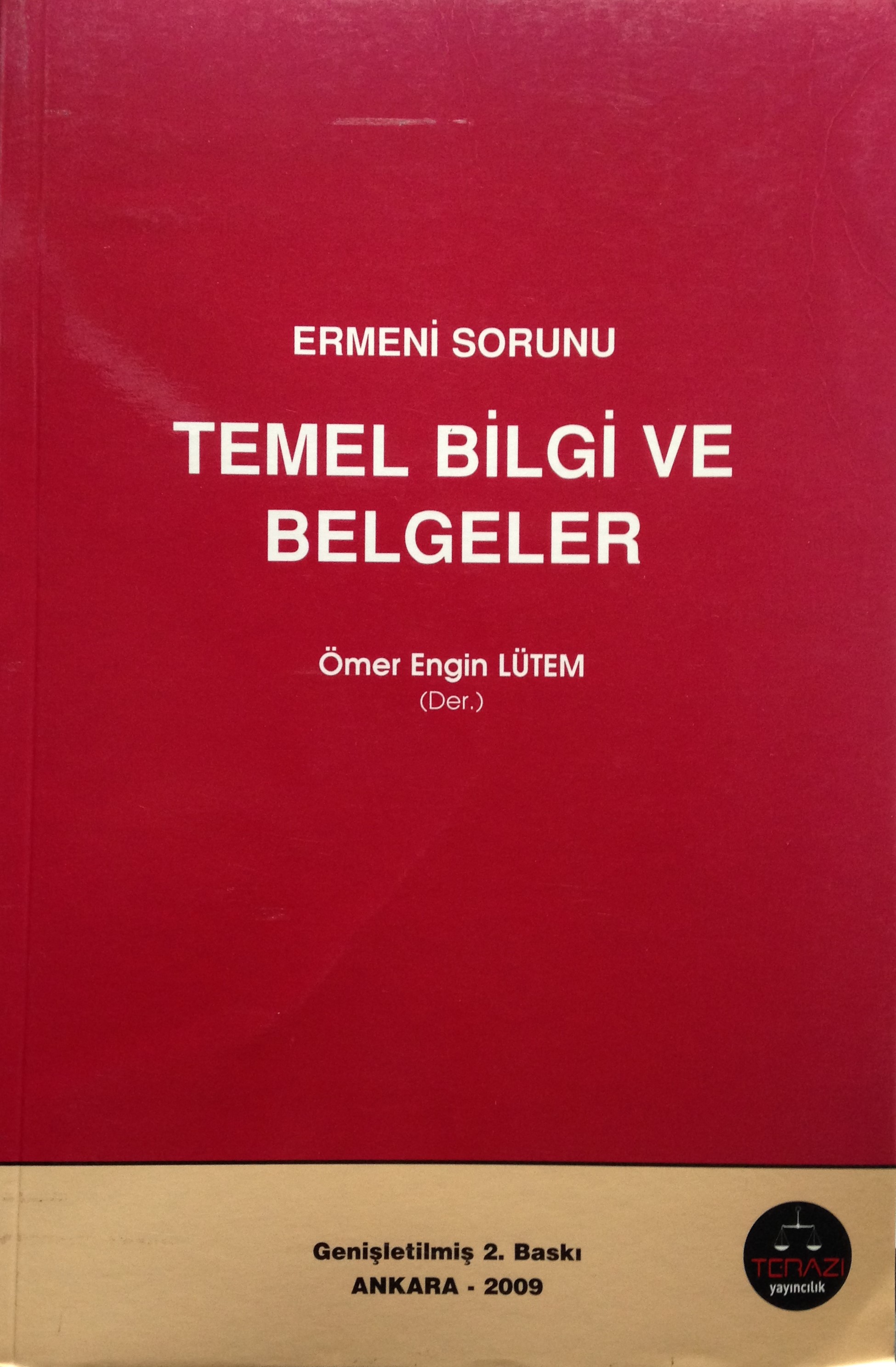
ERMENİ SORUNU - TEMEL BİLGİ VE BELGELER (2. BASKI)
-
AVİM Conference Hall 24.01.2023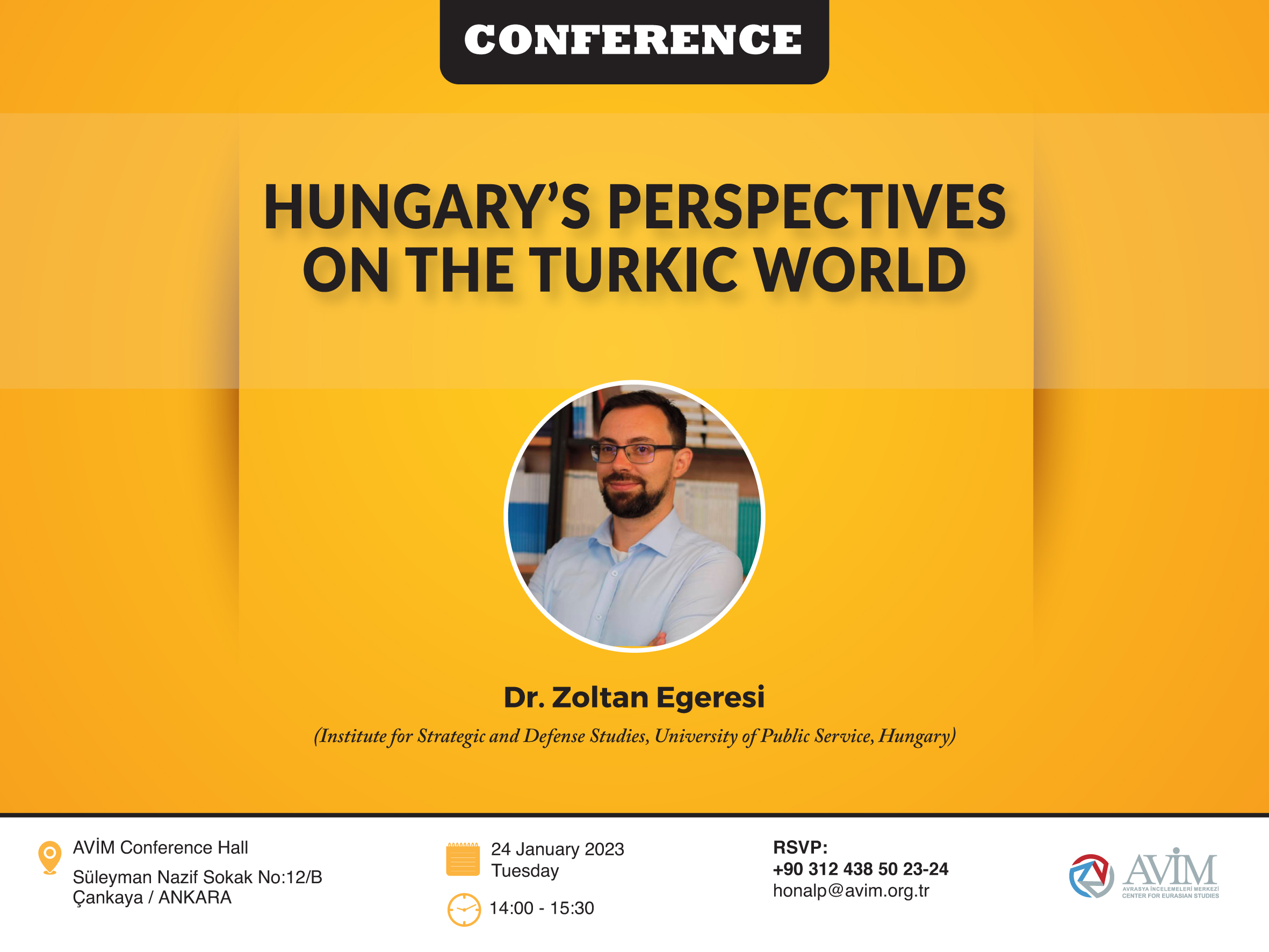
CONFERENCE TITLED “HUNGARY’S PERSPECTIVES ON THE TURKIC WORLD"

